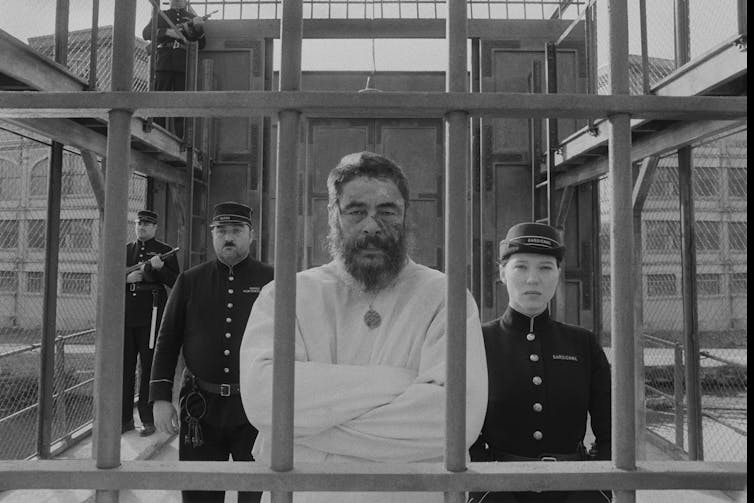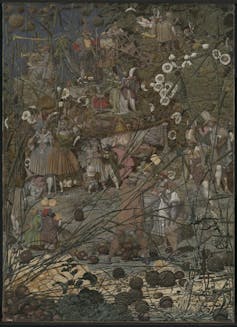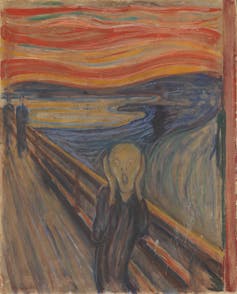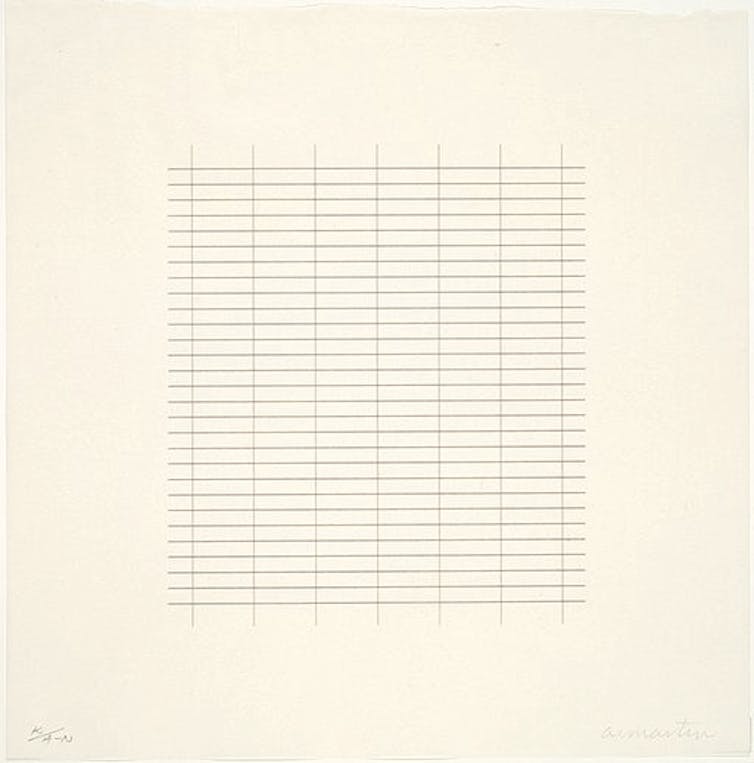
Wes Anderson’s new film The French Dispatch is about the final issue of a magazine that specialises in long-form articles about the goings-on in the fictional town of Ennui-sur-Blasé. The film is an anthology of shorts representing three of the articles.
A piece by the magazine’s art critic (Tilda Swinton) explores the life and late success of the abstract artist Moses Rosenthaler (Benicio Del Toro). Talented from a young age, Rosenthaler pursued art with a dogged determination that drove him to slowly lose his mind. In a fit of rage he commits a triple homicide that lands him in jail, where, after a long time away from art, he creates his best work aided by his prison guard and muse Simone (Léa Seydoux).
Artists, like Rosenthaler, burdened with too great a lust for life, or a tragic taste for alcohol, or even intense and murderous desires, are familiar figures in film and fiction. In some films art itself is demonic.
Like everything else, mental illness is understood within the context of its time. In their study of melancholy and genius Born Under Saturn, the art historians Margot and Rudolf Wittkower show how Renaissance artists embraced mental alienation. This was shown by a withdrawn, slothful gloom. Such heavy sadness was considered both the symptom and the price of divine inspiration. It was a means to distinguish their inspiration from the mere “know-how” of craft. A brush with madness was good PR.
So well established did this association become, that if you look up “artist” in the index of writer Robert Burton’s 1620 compendium The Anatomy of Melancholy, you will find one entry. It reads: “ARTISTS: madmen”.
Today, the association of creativity and mental illness often implies regression from an adult and orderly state of mind to one that is primal, impulsive, or infantile. The artist in Anderson’s film is such an example: he is noisy, impetuous, and extravagantly mad. And it is while he is at his “maddest” that he paints his best work.
Here I explore the work of four painters whose work has been shaped by various mental illnesses, highlighting how the idea of the “mad artist” need not be tied up with a loss of control but rather a bid to gain it. It is not always loud. It can be quiet, highly detailed or restrained – as the work of these artists shows.
Richard Dadd

One parallel to Rosenthaler is the Victorian painter Richard Dadd. The career of this brilliant young artist was destroyed by a mental breakdown that today would probably be diagnosed as paranoid schizophrenia.
Dadd killed his father, imagining him to be the devil incarnate. He was incarcerated in the criminal lunatic department of Bethlem Hospital. It was as a patient that he painted many of his obsessively detailed masterpieces, such as The Fairy Feller’s Master-Stroke, (1855-64). The painting contains hidden details that not everyone can see. For instance, in the middle of the painting, I see a figure with a pallid face, wearing a purple cloak, and standing at right angles to the rest of the painting.
It is the work of this period that Dadd is remembered for.
Edvard Munch
A less painful example can be found in the Norwegian painter, Edvard Munch.

Munch’s famous work The Scream (1893) depicts a vision the artist had of “blood and tongues of fire” rising over a fjord. In the foreground, a cadaverous figure clasps his cheeks in agonised shock. A handwritten message on the top left-hand corner of this painting was recently shown to be in the artist’s hand. It reads: “Can only have been painted by a madman.”
Munch saw it as a sign of health that he could express sickness and anxiety in art, and he embraced the idea that madness was a gift that granted him insights denied to others.
Mary Barnes
A striking example of “creative regression” can be found in the artist and poet Mary Barnes. Diagnosed with schizophrenia and refusing to take basic care of herself, Barnes was the first resident of Kingsley Hall, an experimental therapeutic community founded by the psychiatrist RD Laing. She started making images when she was there, initially using her excrement. As one of her psychotherapists described:
Mary smeared shit with the skill of a Zen calligrapher. She liberated more energies in one of her many natural, spontaneous and unself-conscious strokes than most artists express in a lifetime of work. I marvelled at the elegance and eloquence of her imagery, while others saw only her smells.
Barnes went on to have a successful career as an artist.
The phrase “natural, spontaneous and unself-conscious” is a window into the belief that expressive creativity lies in primal regression. As the last example shows, this is certainly not necessarily the case.
Agnes Martin
The American painter Agnes Martin went through two decades of experimentation to achieve the lucid abstraction that she is known for. In her notes for a talk at the University of Pennsylvania in 1973, she wrote:
The work is so far from perfection because we ourselves are so far from perfection. The oftener we glimpse perfection or the more conscious we are in our awareness of it the farther away it seems to be.

Martin suffered from auditory hallucinations and was diagnosed with paranoid schizophrenia. Her calm and methodical paintings, such as Faraway Love (1999), depict abstract states of existence: innocence, happiness, and the sublime. They are as much meditations as visual experiences.
“Sometimes”, she continued, “through hard work the dragon is weakened.”
The example of Martin’s thoughtful and devoted life is in stark contrast to the noisy stereotype of the impulsive and primal genius.
While the paintings of the fictional Rosenthaler and the real Martin are both highly abstract, they sit in stark contrast to each other. Martin’s has a reserved, ordered quality while Rosenthaler’s is bold and unrestrained, splashing across whatever he is using as his canvas. Away from the romantic notions of the great artist expounded in film, as these artists show, most art is about gaining rather than losing control.![]()
Benedict Carpenter van Barthold, Pricipal Lecturer, School of Art & Design, Nottingham Trent University
This article is republished from The Conversation under a Creative Commons license. Read the original article.
Comments